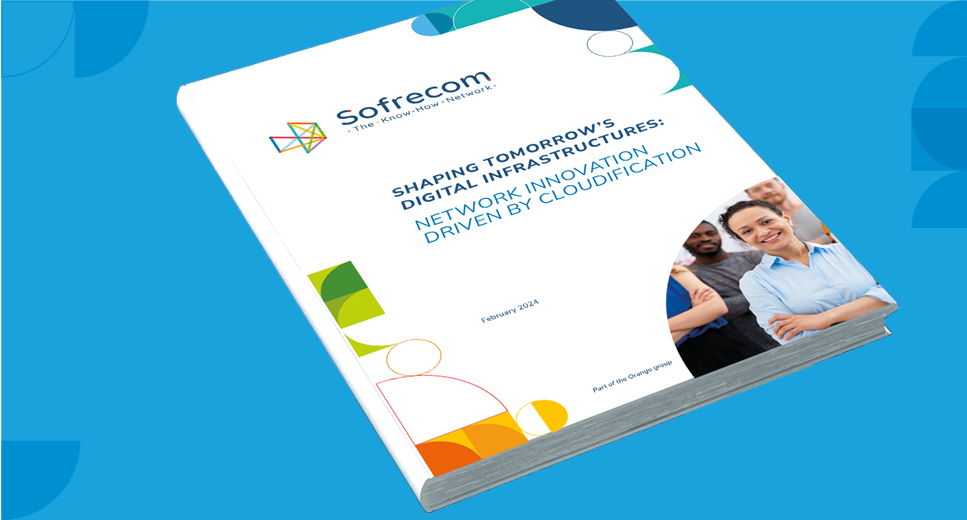
A smart transformation towards cloud-native networks lays the foundations for new telcos business opportunities

By reconfiguring their infrastructures with a focus on data/AI and cloud technology, operators are able to enhance revenue streams from their networks and generate value, especially within the enterprise and wholesale sectors. Transitioning from a telco to a techco represents a significant change, dependent on a deep-seated cultural transformation.
Two years after the commercial launch of 5G on a 4G core network, operators still struggle to enhance revenue streams using this new technology. The introduction of cloud-native 5G core networks will provide them with real service differentiation capabilities. To seize this valuable opportunity and withstand competition from hyperscalers, operators will need to accelerate the smart transformation of their networks. The transition to data-driven and AI-enabled self-diagnosing and self-healing networks is based on four pillars.
Managing Big Data
Network equipment generates a vast amount of data that operators already know how to collect, store, process, and analyze. Their new challenge is to leverage an expanding pool of data sources to unlock new revenue streams and offer innovative services to customers, leveraging their legitimacy as trusted third parties.
Big data management involves:
- Defining strategic data use cases currently unavailable within companies that bring value to different industries by helping them improve their performance or guide theirdecisions. For example, data enabling better resource utilization (energy consumption, time, land, etc.).
- Building a new business model that will encourage operators to work with this new data as monetizable data product offerings.
It is important to structure this new approach of data through a data architecture, while implementing data governance. These topics of big data and data democracy bring the IT world and the networks closer. They lead operators to move from the historical Business Intelligence model, which has reached a level of maturity, to an organization based on open data that utilizes a data-driven company approach.
Transitioning to Telco-Cloud
The evolution of networks towards cloud-native technology, namely containerization, represents the second pillar of transformation. It addresses challenges related to flexibility, elasticity, scalability, optimized capacity management within networks, and agility in deployments. This transition will take time as a telco-cloud model integrates numerous complex technologies and requires investments. The deployment will occur through successive stages, starting with the network cores.
Operators will face a multitude of decisions, including how to effectively integrate network function virtualization (NFV) and software-defined networking (SDN) to reduce costs and speed up time to market. Another critical consideration is the transition towards hybrid and multi-cloud environments, rather than solely relying on private cloud infrastructure. Additionally, determining the approach to containerization and selecting the optimal container orchestration solution are crucial steps. These inquiries require expert guidance to navigate successfully.
To prevent the dominance of hyperscalers in dictating IT solutions, major European operators such as Orange are collaborating under the Sylva initiative by the Linux Foundation Europe to develop an open-source software framework tailored for the telco industry’s cloud needs. The primary aims are to provide a comprehensive solution that addresses operators’ performance requirements, simplifies complexity, and expedites the process of network cloudification.
Automating Network Operations and Maintenance
The automation of provisioning, network management, and security is at the core of network transformation. It will continuously optimize operational efficiency and reliability, thereby accelerating the deployment of new applications, reducing maintenance costs, and enhancing service quality for end customers. The DevSecOps approach inherited from IT incorporates continuous integration and continuous delivery (CI/CD) practices throughout the software lifecycle. This methodology involves multiple communities of engineers and developers collaborating agilely within a Network Integration Factory. The goal is to maximize automation to make networks fully autonomous and capable of self-diagnosis and self-repair.
Automation maturity levels are evaluated on a scale of 0 to 5. Simple automation involves setting up bots to perform previously manual, repetitive, or time-consuming tasks. Complex automation relies on AI or machine learning algorithms. For instance, it can automatically detect the root cause of a failure and correct it by either triggering repair procedures automatically or sending a work order to a technician through a workforce management tool that prepares and schedules the intervention.
Creating Network Services
These three steps are prerequisites for the continuous creation of smart network services, which can be monetized by businesses or other operators. These services could impact network performance and resource utilization, such as:
- An insurance service that leverages AI and machine learning software for predictive maintenance. It utilizes these technologies to detect weak signals, anticipate failures, and prevent outages, thereby ensuring high network quality of service.
- Quality of service offerings that are available on demand, facilitated by service exposure through APIs within a platform approach. For example, a customer may experience very low latency exclusively when transitioning to an online gaming session.
The democratization of Network as a Service (NaaS) offerings through technological transformation will simplify access to cloud services for businesses. This means that companies unwilling to invest in deploying, for instance, a 5G core network can now subscribe to cloud services based on their specific requirements and pay accordingly. Sofrecom establishes benchmarks to support its clients throughout their transition to the cloud, aiming to guide them toward reaching a desired level of maturity across the four transformation pillars. These benchmarks take into account the unique business priorities and challenges faced by each company.
A Paradigm Shift
Beyond the technical transformation complexity, operators will need to manage and facilitate a profound cultural transformation within their organization.
Their entry into the software era will require the following implementations:
- Converging network skills with IT skills is vital. Network engineers will need to enhance their skills in big data integration, automation, DevSecOps methods, security, AI algorithms, and machine learning. There’s a real need for upskilling, if not reskilling.
- Implementing agile working methods on short cycles is crucial for network teams to foster agile development and continuous innovation.
- Transitioning towards platformization involves adopting a marketplace logic that integrates connectivity/communication services with digital services.
- Collaborating with the entire ecosystem and sharing solutions with an open-minded approach, which is not inherent in the historical DNA of operators.
In the digital-driven economy, operators possess a valuable asset: the smart transformation of their infrastructures enables them to transition successfully from telecommunications companies to technology firms and lays the foundation for their future growth.





